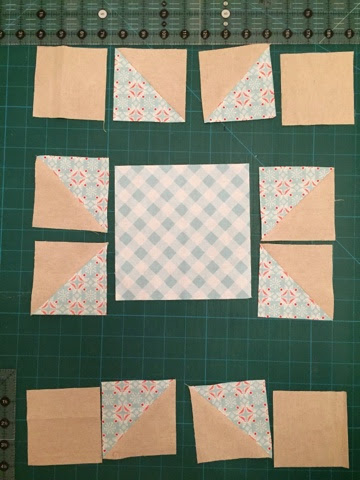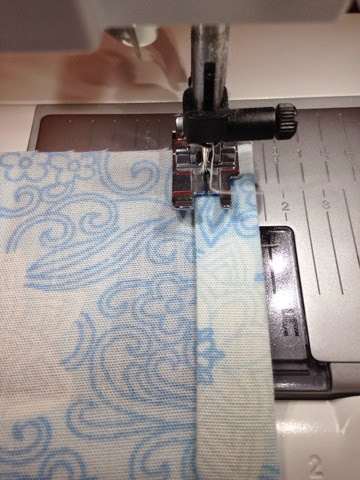This month we are making a Simplex Star, and a variation of it is also known as a Friendship Star. Very apt for our little group I thought...
So here goes the instructions for the Simplex Star.
Firstly, you will need three different fabrics-
A: For the centre square and one half of the Half Square Triangle (or HST, which I will explain later),
B: For the other triangle of the HST
C: For the four squares in each corner.
Measurements for each fabric:
A: 1x 4.5" square, 2x 5.5" square
B: 2x 5.5" square
C: 4x 4.5" squares
I would recommend after cutting your fabrics to make your HSTs. These are simple and not at all scary. I know the fear of triangles out there, so we need to see how easy these babies really are...ok?!
Making your HSTs:
First of all take your two 5.5" squares of fabrics A and B.
Whichever is the lighter of the two fabrics, draw a diagonal line on the REVERSE side from one corner to the opposite corner. Do this for both fabrics.
Then, place Fabrics A and B right sides together.
You will be sewing a line on each side of this centre line, a quarter inch away. If you like, draw another pencil line on either side of the centre line a quarter inch from it.
Once you have stitched these two lines, you will cut along the centre line, giving you two triangles.
Open each piece up to give yourself a square and press towards the darker of your fabrics.
These squares will then need to be trimmed down to measure 4.5" square. You can do this easily with you quilting ruler.
Open each piece up to give yourself a square and press towards the darker of your fabrics.
These squares will then need to be trimmed down to measure 4.5" square. You can do this easily with you quilting ruler.
That's the tricky part done!
Now, lay out all of your fabric pieces in the arrangement in which they will be sewn together.
In blocks of this type, I nearly ALWAYS sew in lines, i.e. top line, then middle, then the bottom. So stitch each row, starting with the top.
Press your seams for the top and bottom rows to the RIGHT and for the middle row to the LEFT to make it easier when you come to join the rows together. Firstly stitch the top and middle rows together, taking care to nest your seams. Then attach the bottom row.
Press your seams open,
Press your seams for the top and bottom rows to the RIGHT and for the middle row to the LEFT to make it easier when you come to join the rows together. Firstly stitch the top and middle rows together, taking care to nest your seams. Then attach the bottom row.
Press your seams open,







































